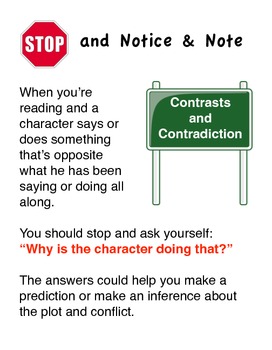
See the anchor chart below with the anchor question for an aha moment, “How might this change things?” I have been working on developing objectives that build upon one another with action steps along the way that will help bring this project to fruition. Here I am a visionary and big picture kind of girl trying to bring to fruition school wide teaching practices that cultivate close reading. Then, we will work on close reading strategies for non-fiction in ela (I hope to find out soon what those non-fiction signposts will be), and finally my hope is to teach these strategies so well in ELA that all content areas will embrace and encourage the students to use these strategies. During the first half of next year, I plan to take these strategies school wide in ela. For the remainder of this school year, I will be trying out the close reading strategies in my class, presenting the strategies at a literacy conference, and helping other ela teachers in my grade level teach these strategies. In a little less than a month, I realize (yes, another a-ha moment) that I have put a lot on my plate as a literary and literacy leader (as school ela department chair and as a participant in KMWP’s Advanced Leadership Institute). After a bit of Googling, I found myself on YouTube listening to Kylene Beers and Bob Probtst talk about close reading in a way that made sense in such a powerful way that I immediately bought their book Notice and Note, read the book and began implementing their close reading strategies. Annotating the text seemed difficult for my 6th graders, and I could tell I needed to find something that would work for me and for my students. I definitely couldn’t close read in the style of Coleman, nor could I get into the Prentice Hall book that had been given to me about Close Reading. In early January, I was looking through some resources about close reading, and suddenly I realized that I wasn’t “getting” it. As a reader who finds an aha moment, you should ask, “How might this change things?” Well, as you would expect Crash’s aha moment is followed by his bullying and taunting of Penn Webb. Eventually, though as in most YA lit, his aha moments change and develop and lead to growth and insight. Crash’s aha moment comes to him as he realizes that he must block the passage of Penn Webb, the scrawny kid next door. The sample lesson included an aha moment that was neither positive nor prolific.

And, yes, I had an aha moment about aha moments. Late this afternoon while driving home after a long day at school, I was thinking about my intro lesson for the signpost of aha moments. Sometimes while I’m driving, I get ideas for lessons or have epiphanies that have gone unrealized in the past. I’ve often thought I could take a dry erase board in the shower to capture the aha moments that come to me then.


Usually they come to me when the technology is away and the distractions of the world are minimal. A Place for Teachers to Write, Reflect and GrowĪha moments come to me in short bursts and little snippets.


 0 kommentar(er)
0 kommentar(er)
